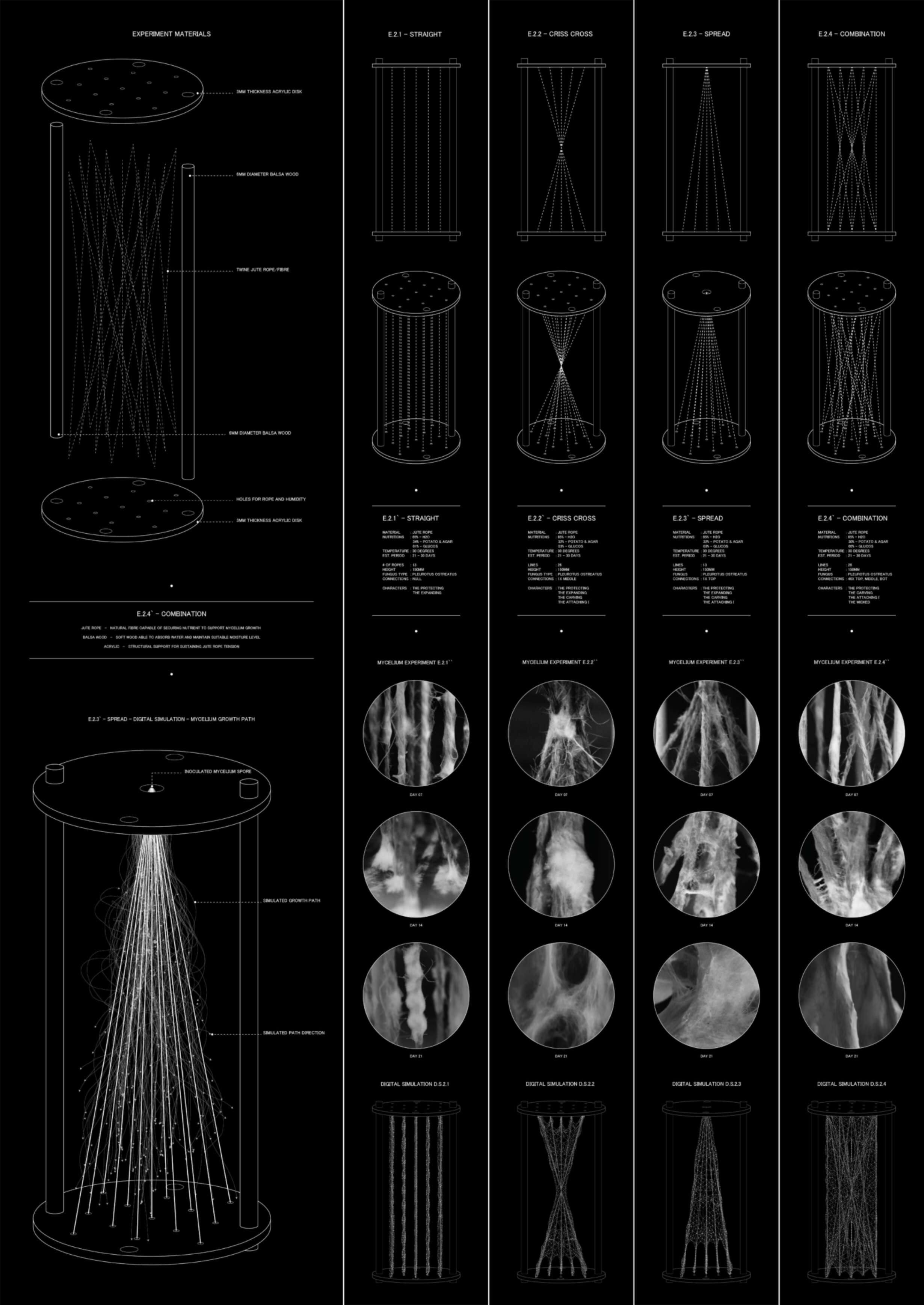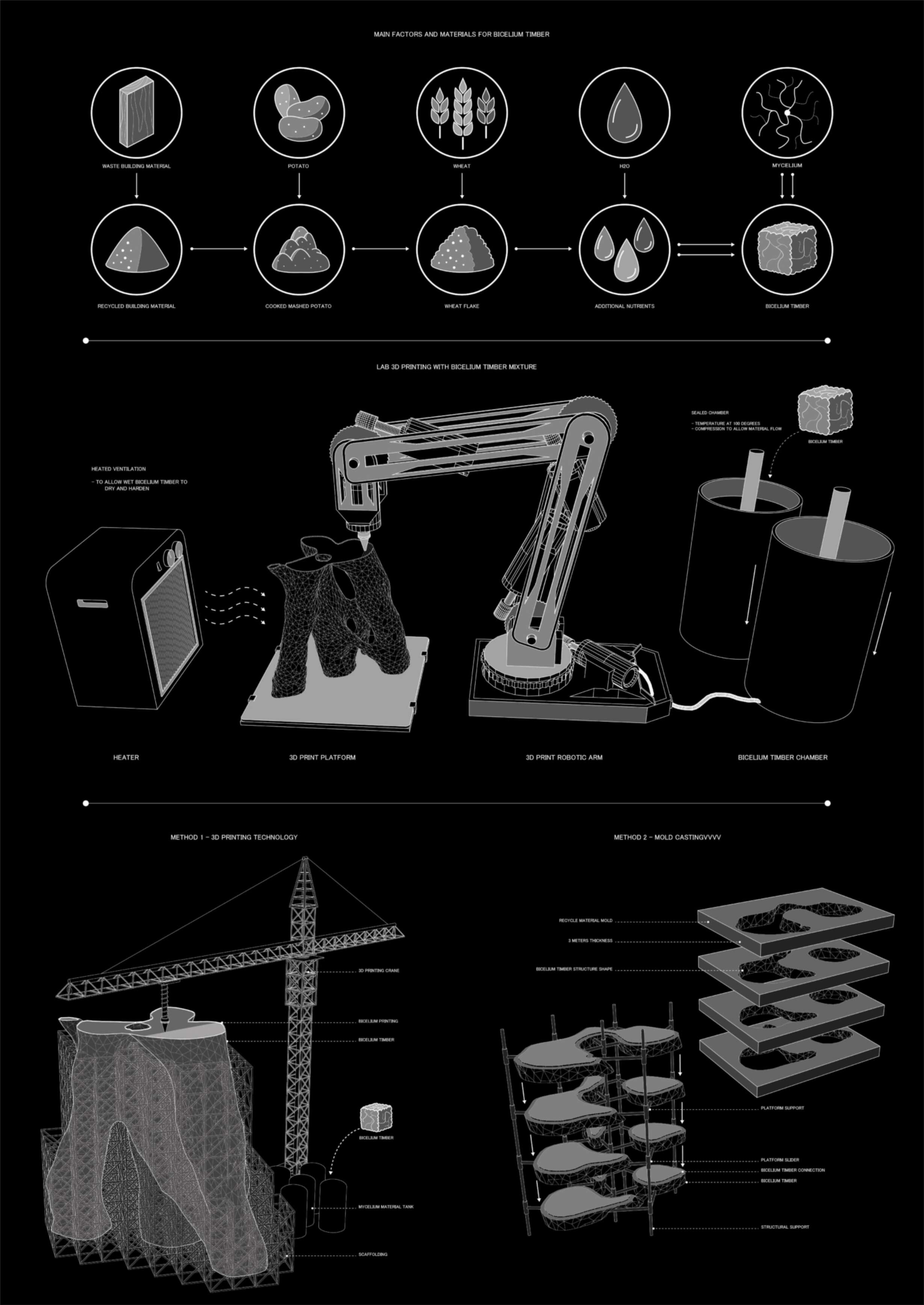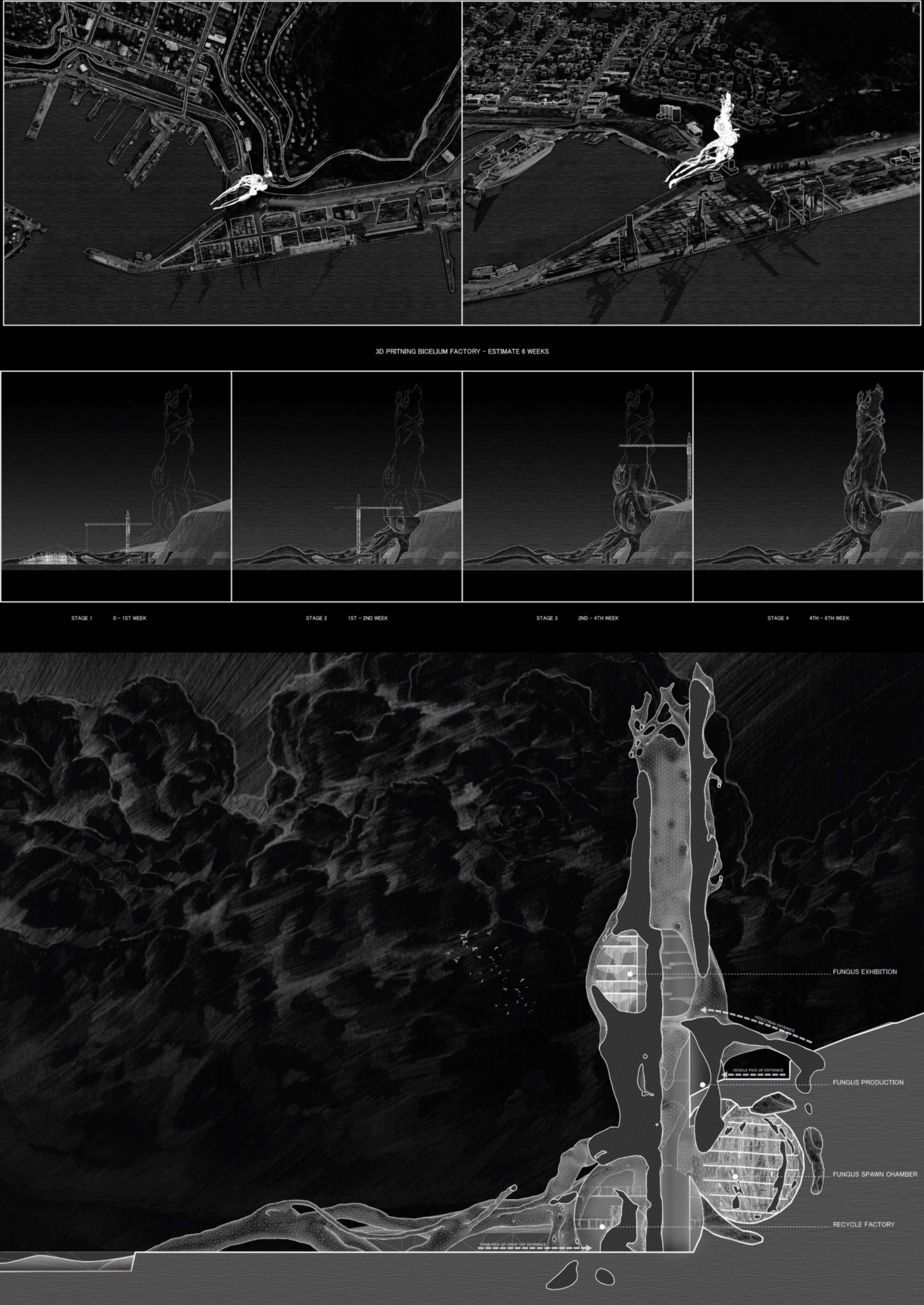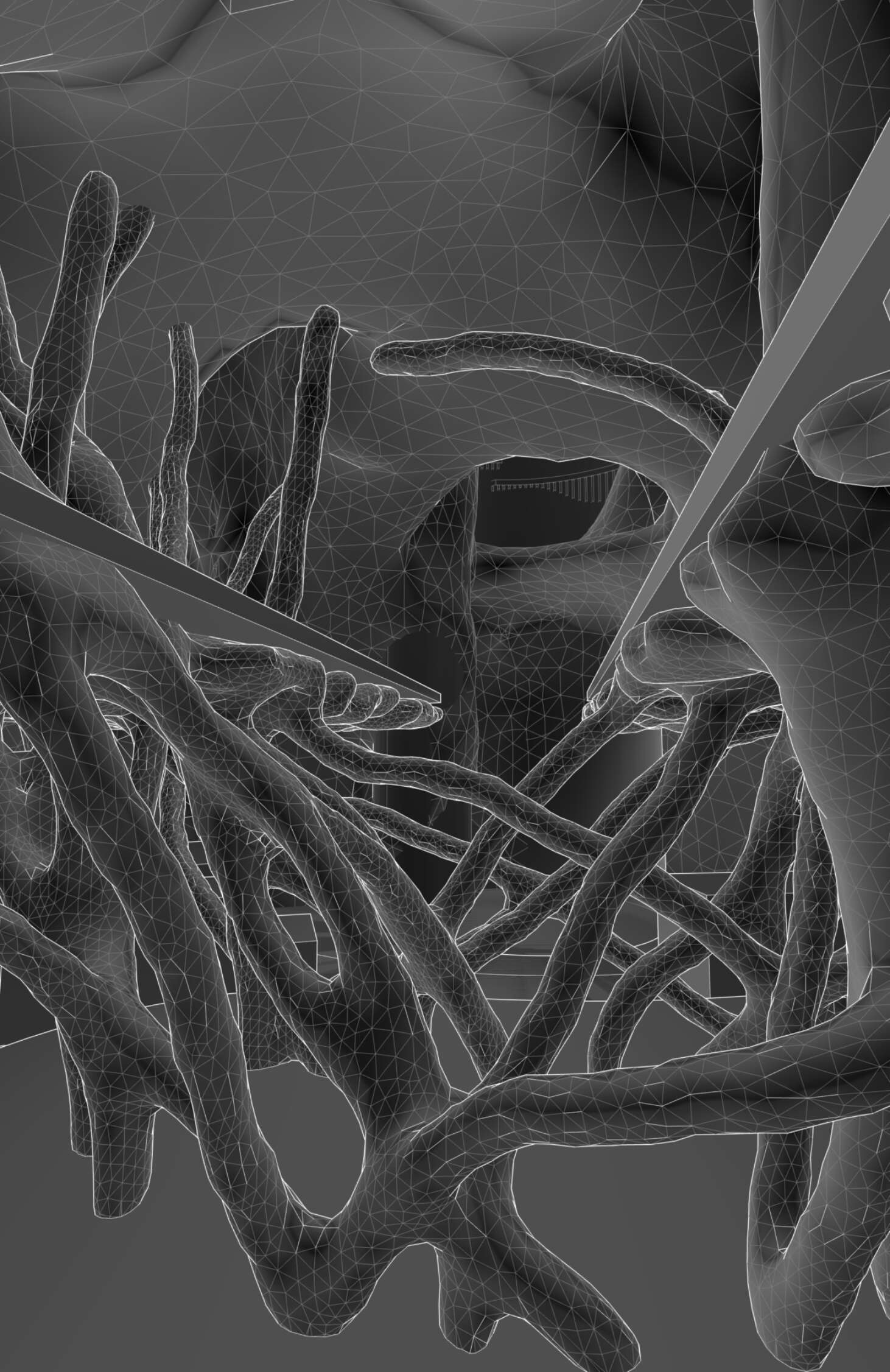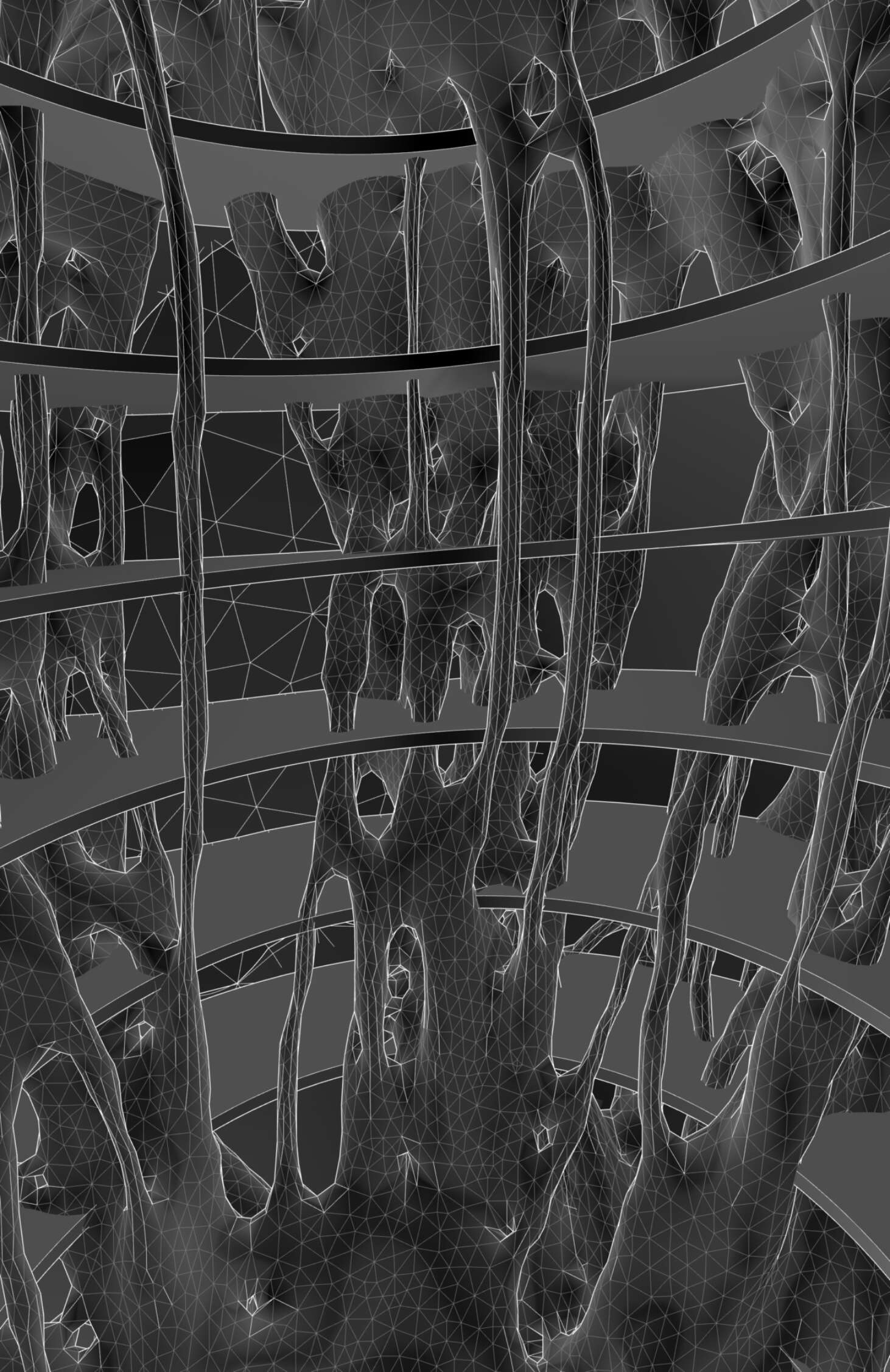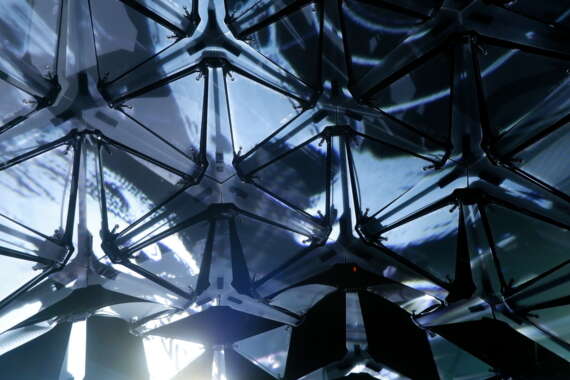Fungal mycelium as a biomimicry proposition to an advanced recycled building material
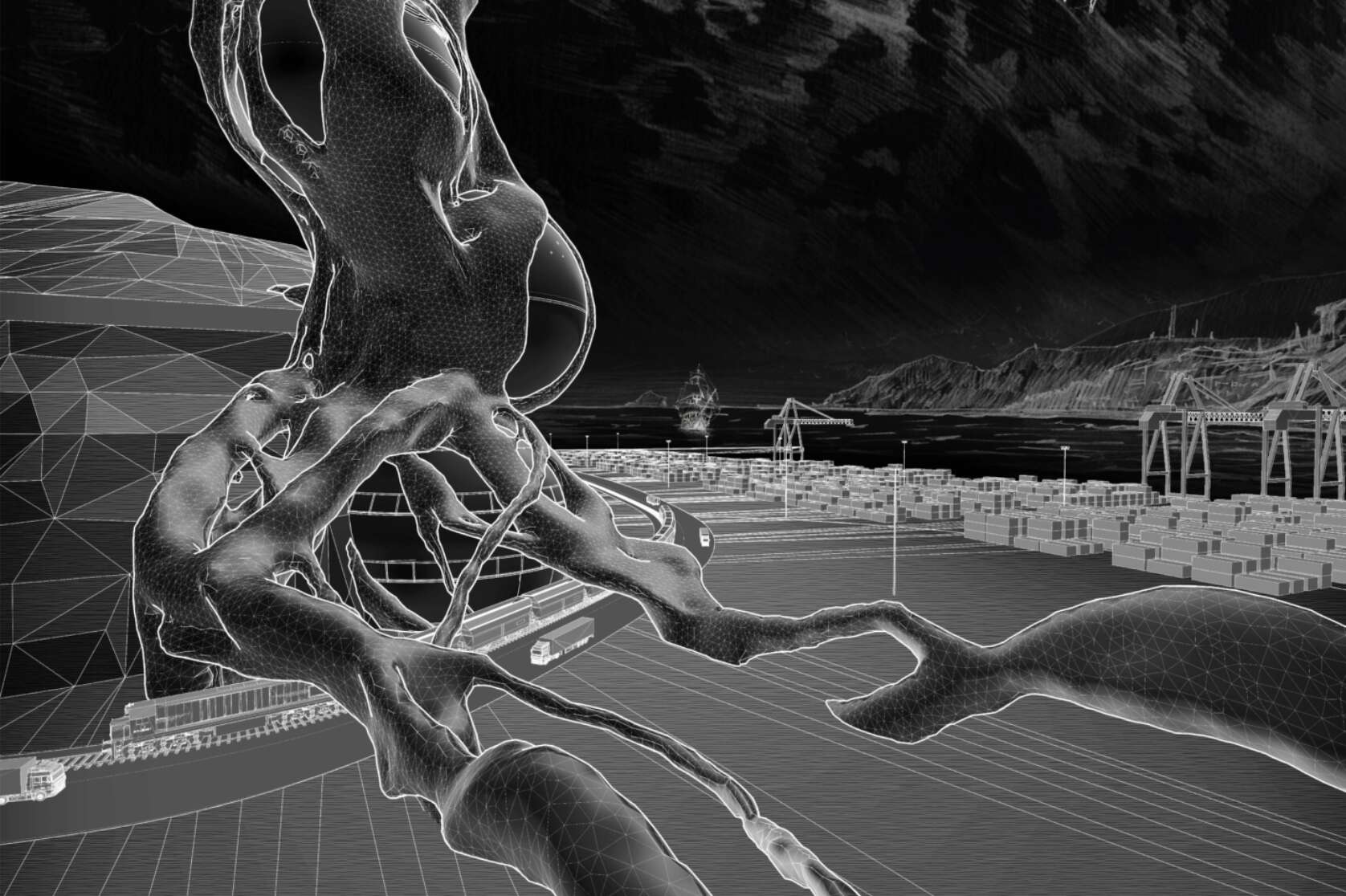
The modern urbanisation of cities and towns is the dynamic evidence fostering a new direction of movement towards adapting to current human needs. This has resulted in urban planning focusing on futuristic developments and architecture to compete with its finest technology and materials.
We are constantly attempting to achieve a mutual equilibrium between human, nature and technology. However, due to restrictions and demands we tend to blind ourselves to an unbreakable relationship between human and technology, thus devastating and unbalancing the welfare of nature.











